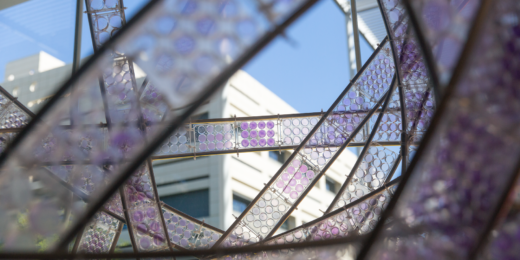Operating rooms generate a lot of trash -- as much as nine or 10 large garbage bags' worth from each major surgery, as I learned while reporting a recent feature story for Stanford Medicine magazine on greening the OR.
Dana Hiniker, sustainability program manager at Stanford Medicine Children's Health, is one of many experts in the story who is changing that. Hiniker's background is in public health -- she holds a master's in health policy management and science -- and she's been interested in health care sustainability since graduate school, a natural progression from her lifelong passion for climate issues.
"Zero waste is one of my top priorities," Hiniker told me. Like many of her colleagues, she wants to reduce the environmental footprint of the U.S. health care industry, which generates more emissions per patient compared to others around the world.
"We're focused on healing and promoting health and well-being; to do that without an eye toward the environmental impact of our work is really unacceptable," Hiniker said, noting that climate change is harming the health of the same people medical providers are trying to help.
As part of her role, Hiniker has been working with the perioperative services green team at Lucile Packard Children's Hospital Stanford to improve the sustainability of the hospital's operating rooms, including by finding alternatives to throwaway supplies.
The team's strategies have included switching to reusable items in the pre-operative, OR and surgical recovery areas and recycling some materials used in the OR, such as the sterile blue wrap that covers surgical instrument trays.
"Recycled blue wrap can be turned into medical plastic, tote bags or plastic trays that we could then use," Hiniker said. "I'm hoping to close the loop in terms of purchasing products made with recycled blue wrap."
Donating supplies at home and abroad
Hiniker also oversees efforts to donate unneeded hospital supplies to other organizations that can use them, both locally and around the world.
Some items that are in good condition can't be used onsite due to local safety regulations, such as opened but unused packages of tissues, diapers or infant oxygen masks, all of which are collected for donation in the labor and delivery rooms at Packard Children's.
"We have a partnership with VIDA USA, a local organization that collects and ships working, good quality medical supplies and equipment to Latin America," Hiniker said.
The efforts extend outside the operating rooms. As parts of Packard Children's undergo renovations, Hiniker is finding Bay Area nonprofits that can accept donations of furniture, TVs and other items, thus keeping them out of landfills.
Hiniker says she's excited by the motivation her Stanford Medicine colleagues demonstrate for taking on sustainability-related projects. "I've been really impressed by what people are already doing on their own," she said. "It speaks to the fact that this is something people at Stanford care about."
llustration by Anuj Shrestha






